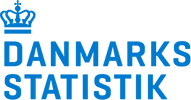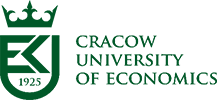About us
The Future Migration Scenarios for Europe project focuses on understanding the patterns of migration at multiple levels, from the international over the national and regional to the local level.
The project aims to determine both current and future trends of migration by looking at
1) the major factors explaining migrant movement patterns by analysing regional and local circumstances that either attract migrants or ‘push’ potential migrants to move,
2) the possible future regional sociodemographic, economic and environmental challenges that may shape future migrant movement patterns in Europe
FUME will support planning and policy-making processes at many levels by formulating integrated and coherent visions of how migration to and within Europe might evolve under different scenarios relating to potential demographic, socio-economic, political and environmental challenges.
The project runs from December 2019 to May 2023. A final conference will be held in the Spring of 2023.
The local perspective
Local circumstances play a major role in the migration process, from the decision to migrate through the transit process up to the settlement in the destination countries.
Nearly all international migrants generally move to the largest cities in destination countries, either directly, or after one or more internal moves. This is also the case across Europe, where population growth in many cities can be largely attributed to an influx of migrants.
At the same time, in countries of origin the largest cities often function as gateways to destinations abroad. Many potential migrants in villages and small towns in origin countries first move to these larger cities before leaving their country. Cities, therefore, both in countries of origin and destination, are significant determinants of global migration and small-scale local knowledge on migration is necessary to avoid misleading results associated with the limitations arising from the use of global or national patterns only.
Consequently, a major aspect of the scope and approach of the Future Migration Scenarios for Europe project is to look at specific case areas, combined with an overall analysis of migration patterns within and between these, to create scenarios for how migration may evolve in Europe – see more under Cases
The Future Migration Scenarios for Europe is funded by the EU Horizon 2020 Programme – read more about H2020 here
Contacts
Lead partner/project management:
Carsten Keßler – kessler@plan.aau.dk – Aalborg University Copenhagen
Henning Sten Hansen – hsh@plan.aau.dk – Aalborg University Copenhagen
Communications:
Vaida Ražaitytė – vaida.razaityte@nordregio.org – Nordregio
Advisory board
Sabina Kubiciel-Lodzińska (Member of the National Contact Point for Poland in the European Migration Network)
Coen van Duin (Head of the Population Projections Team at Statistics Netherlands)
Hanne Beirens (Project Officer, Knowledge Centre of Migration and Demography, representative of Joint Research Center of the European Commission)
Sona Kalantaryan (European Commission, Joint Research Centre)
Giampaolo Lanzieri (Eurostat)









